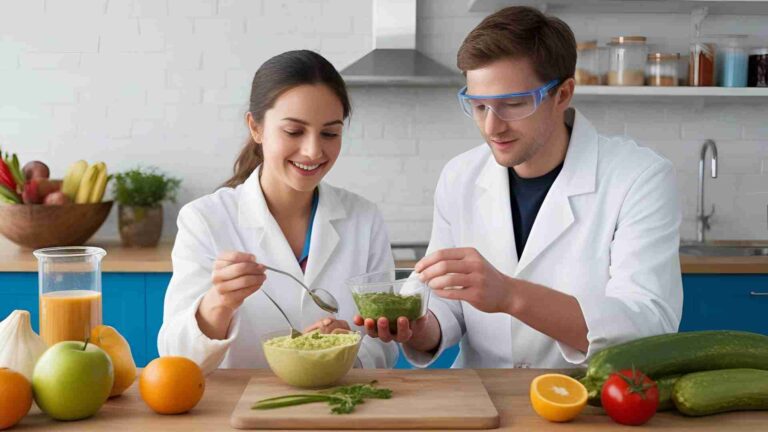The Ultimate Guide to Lenses For Food Photography
Discover the ultimate guide to lenses for food photography. Learn about macro, prime, and zoom lenses, with top recommendations and tips for stunning shots.
Food photography is an art form that demands precision, creativity, and the right tools to capture the textures, colors, and details that make dishes irresistible. Among these tools, the lens you choose plays a pivotal role in shaping the final image. Whether you’re a beginner upgrading from a kit lens or a seasoned photographer refining your craft, selecting the perfect lens can elevate your food photography to professional levels. This comprehensive guide explores the best lenses for food photography, comparing macro, prime, and zoom options, and offering actionable advice to match your shooting style, camera type, and budget.
Understanding Camera Lenses for Food Photography
Before diving into specific lens recommendations, it’s essential to understand the basics of camera lenses and how they impact food photography. Lenses are defined by their focal length (measured in millimeters) and maximum aperture (denoted by f-numbers like f/1.8 or f/2.8). These specifications determine the field of view, depth of field, and light-gathering ability, all of which are critical for capturing stunning food images.
What Do Lens Numbers Mean?
- Focal Length: This indicates the lens’s angle of view and magnification. A lower number (e.g., 35mm) provides a wider field of view, ideal for capturing entire scenes or flatlays. A higher number (e.g., 100mm) narrows the field, perfect for close-ups or isolating subjects.
- Aperture: Represented by f-numbers, a lower f-number (e.g., f/1.8) means a wider aperture, allowing more light and creating a shallow depth of field for creamy bokeh. A higher f-number (e.g., f/8) increases depth of field, keeping more of the scene in focus.
- Prime vs. Zoom: Prime lenses have a fixed focal length, offering superior sharpness and larger apertures but requiring physical movement to adjust framing. Zoom lenses cover a range of focal lengths, providing versatility at the cost of slightly reduced sharpness.

Why Lenses Matter in Food Photography
Food photography often involves capturing intricate details—think the glaze on a donut or the steam rising from a dish—while also creating appealing compositions for entire plates or tablescapes. The right lens can:
- Highlight Textures: Macro lenses excel at capturing fine details like the crust of bread or the dew on a berry.
- Control Depth of Field: A wide aperture creates a blurred background, isolating the subject for a professional look.
- Adapt to Shooting Scenarios: From tight close-ups to wide overhead shots, the lens determines how much of the scene you can capture.
Macro Lenses vs. Regular Lenses
Macro Lenses
Macro lenses are designed for close-up photography, offering 1:1 magnification, meaning the subject appears life-size on the sensor. They are ideal for food photographers who want to emphasize textures, such as the sheen of a sauce or the grain of a pastry.
Pros:
- Exceptional Detail: Optimized for close-up work, macro lenses deliver unparalleled sharpness.
- Unique Perspectives: They reveal details invisible to the naked eye, like the crystalline structure of sugar.
- Flat-Field Focus: Ensures uniform sharpness across the frame, critical for flatlays or detailed shots.
Cons:
- Limited Versatility: Less effective for wide shots or scenes with multiple elements.
- Shallow Depth of Field: Requires precise focusing to keep the desired area sharp.
- Light Requirements: Close focusing distances may demand additional lighting.
Regular Lenses (Prime and Zoom)
Regular lenses, including prime and zoom options, are versatile tools for food photography. Prime lenses offer sharpness and large apertures, while zoom lenses provide flexibility across focal lengths.
Pros:
- Versatility: Zoom lenses like the 24-70mm f/2.8 cover wide to medium shots, ideal for dynamic shoots.
- Beginner-Friendly: Kit lenses (e.g., 18-55mm) are affordable and cover multiple scenarios.
- Creative Freedom: Wide apertures allow for bokeh and low-light shooting.
Cons:
- Less Detail: Regular lenses can’t match macro lenses for close-up sharpness.
- Cost: High-quality zoom lenses can be expensive, sometimes more than macro lenses.
| Lens Type | Magnification | Depth of Field | Versatility | Best Use Case |
|---|---|---|---|---|
| Macro | 1:1 (Life-size) | Shallow, precise | Limited | Close-ups, textures |
| Prime | Limited | Shallow to moderate | Moderate | Portraits, flatlays |
| Zoom | Limited | Variable | High | Wide shots, dynamic scenes |
Choosing the Right Lens for Your Camera
The lens you choose depends on your camera’s sensor type—full-frame or crop sensor—as well as your shooting style and budget.
Full-Frame vs. Crop Sensor Cameras
- Full-Frame Sensors (36mm x 24mm): Capture the entire image projected by the lens, offering wider angles, better low-light performance, and smoother bokeh. They’re ideal for professionals shooting large dishes or in low-light settings.
- Crop Sensors (e.g., APS-C, Micro Four Thirds): Smaller sensors crop the image, effectively increasing the focal length (e.g., a 50mm lens on an APS-C sensor feels like 75mm). They’re more affordable, portable, and great for enthusiasts or bloggers.
Top Lenses for Full-Frame Cameras
- 50mm f/1.8 (Nifty Fifty):
- Price: ~$200-$400
- Features: Affordable, sharp, and versatile for flatlays, overhead shots, and 45-degree angles. Its wide aperture excels in low light.
- Best For: Beginners and versatile shooting.
- 100-105mm f/2.8 Macro:
- Price: ~$400-$1,300
- Features: 1:1 magnification, excellent bokeh, and a longer working distance for detailed close-ups without disturbing the setup.
- Best For: Texture shots and professional-grade images.
- 24-70mm f/2.8 Zoom:
- Price: ~$1,500-$2,000
- Features: Covers wide to medium focal lengths, ideal for dynamic shoots and varied compositions.
- Best For: On-location shoots and versatility.
- Tilt-Shift Lens (e.g., 45mm or 90mm):
- Price: ~$1,400-$2,200
- Features: Controls the plane of focus and perspective, perfect for creative compositions and precise focus.
- Best For: Advanced photographers with specific creative needs.
Top Lenses for Crop Sensor Cameras
- 35mm f/1.8:
- Price: ~$150-$300
- Features: Equivalent to ~50mm on full-frame, great for flatlays and overhead shots.
- Best For: Wide shots and budget-conscious photographers.
- 60mm f/2.8 Macro:
- Price: ~$300-$500
- Features: Compact, affordable, and ideal for close-ups and 45-degree shots.
- Best For: Detailed shots in tight spaces.
Recommended Macro Lenses
| Lens | Magnification | Aperture | Features | Price | Sensor Type |
|---|---|---|---|---|---|
| Canon EF 100mm f/2.8L Macro IS USM | 1:1 | f/2.8 | Image Stabilization, creamy bokeh | ~$1,299 | Full-frame & APS-C |
| Nikon AF-S VR Micro-Nikkor 105mm f/2.8G | 1:1 | f/2.8 | Vibration Reduction, sharp details | ~$438 | Full-frame & APS-C |
| Sigma 105mm f/2.8 EX DG OS HSM Macro | 1:1 | f/2.8 | Optical Stabilization, versatile | ~$729 | Full-frame & APS-C |
| Nikon 60mm f/2.8D AF Micro-Nikkor | 1:1 | f/2.8 | Compact, forgiving depth of field | ~$390 | APS-C & Full-frame |

Best Lenses for Specific Food Photography Shots
Overhead Shots (Flatlays)
Overhead shots showcase the entire dish or scene, often used for flatlays or tablescapes. The best lenses for these shots are:
- Crop Sensor: 35mm f/1.8 (equivalent to ~50mm on full-frame) for wide, distortion-free shots.
- Full-Frame: 50mm f/1.8 or 60mm f/2.8 for flattering perspectives. An 85mm can reduce edge distortion if you have height above the scene.
45-Degree Shots
The 45-degree angle is popular for capturing the height and texture of dishes, mimicking the diner’s perspective. Recommended lenses include:
- Crop Sensor: 50mm f/1.8 or 60mm f/2.8 macro for sharp, detailed shots.
- Full-Frame: 85mm f/1.8 or 100-105mm f/2.8 macro for superior bokeh and subject isolation.
Close-Up Texture Shots
Macro lenses shine for close-ups, capturing details like the crumble of a pastry or the drip of a sauce. Top choices:
- Crop Sensor: 60mm f/2.8 macro for compact, budget-friendly performance.
- Full-Frame: 100-105mm f/2.8 macro for professional-grade detail and working distance.
Tilt-Shift Lenses for Creative Control
Tilt-shift lenses are specialized tools that offer unique control over focus and perspective, making them a favorite among advanced food photographers.
- Tilt Function: Adjusts the plane of focus, allowing selective focus or keeping the entire dish sharp at an angle.
- Shift Function: Corrects perspective or repositions the subject without moving the camera, ideal for precise compositions.
Best Use Cases:
- Creative shots with a mix of focus and blur.
- Adjusting angles for props or backgrounds without repositioning the setup.
Example: A 90mm tilt-shift lens can keep a dessert in focus while blurring the background, creating a dreamy effect.
Price Range: ~$1,400-$2,200, making them a significant investment for experienced photographers.
iPhone Lenses for Food Photography
For photographers using smartphones, iPhone lenses like Moment lenses offer affordable, high-quality options to enhance food photography.
- Moment Wide Angle Lens (~$120): Expands the field of view for landscapes or tablescapes.
- Moment Macro Lens (~$120): Provides close-up capabilities for detailed textures, requiring an iPhone case for secure attachment.
These lenses are cost-effective alternatives to DSLR or mirrorless lenses, ideal for beginners or mobile photographers.
Best Lens Settings for Food Photography
To maximize the potential of your lens, consider these settings:
- Aperture:
- f/2.8-f/5.6: For shallow depth of field and bokeh, ideal for close-ups or single-subject shots.
- f/8 or smaller: For greater depth of field, perfect for larger scenes or flatlays.
- Shutter Speed: Use at least 1/250s for handheld shots to avoid blur. Slower speeds are fine with a tripod.
- ISO: Keep between 100-400 for clean, sharp images, especially in close-ups.
- Focus: Manual focus for precise control in macro shots. Consider focus stacking for maximum detail across the dish.
Choosing Your First Food Photography Lens
If you’re starting with an 18-55mm kit lens, here’s how to upgrade based on your camera:
- Crop Sensor:
- Recommendation: 60mm f/2.8 macro (~$300-$500) for detailed close-ups and 45-degree shots.
- Why: Affordable, compact, and ideal for capturing textures in tight spaces.
- Full-Frame:
- Recommendation: 50mm f/1.8 (
$200-$400) for wide scenes or 100-105mm f/2.8 macro ($400-$1,300) for detailed shots. - Why: The 50mm is versatile and budget-friendly, while the 100mm macro offers professional-grade detail.
- Recommendation: 50mm f/1.8 (
Budget-Friendly Lens Options
Photography can be expensive, but lenses are a long-term investment. Budget-friendly options include:
- 50mm f/1.8 (Nifty Fifty) (~$200-$400): Affordable, sharp, and versatile for both sensor types.
- Tamron 90mm f/2.8 Macro (~$400-$600): A cost-effective alternative to brand-name macro lenses, offering excellent performance.
Rent Before You Buy
Lenses are a significant investment, so renting before purchasing is wise. Services like LensRentals.com allow you to test lenses to ensure they suit your style. This is especially helpful for crop sensor users or those considering expensive options like tilt-shift lenses.
Making the Right Choice
Choosing the best lens for food photography depends on several factors:
- Sensor Type: Ensure compatibility with your camera’s sensor for optimal performance.
- Shooting Style: Prioritize macro lenses for close-ups or zoom lenses for versatility.
- Budget: Balance cost with quality, considering long-term value.
- Stabilization: Look for image stabilization for handheld shooting, especially with macro lenses.
- Testing: Rent or borrow lenses to try before committing.
For most food photographers, the Canon EF 100mm f/2.8L Macro IS USM ($1,299) is the top choice for its versatility, image stabilization, and superior bokeh. For budget-conscious shooters or those in tight spaces, the Nikon 60mm f/2.8D AF Micro-Nikkor ($390) is a fantastic option.
Conclusion
The right lens can transform your food photography, bringing out the textures, colors, and stories behind every dish. Whether you opt for a macro lens for intricate close-ups, a prime lens for versatile shots, or a zoom lens for dynamic compositions, understanding your camera, shooting style, and budget is key. Invest wisely, test before buying, and let your lenses help you create mouthwatering images that captivate your audience.
Happy shooting!
Please share these The Ultimate Guide to Lenses For Food Photography with your friends and do a comment below about your feedback.
We will meet you on next article.
Until you can read, Zen Accounting for Bloggers






